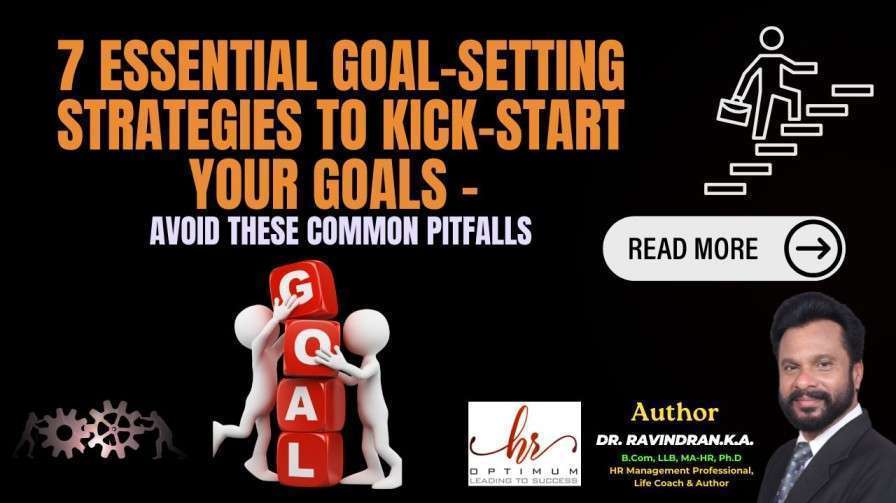How To Set Goals: Your Path to Success
Over 2000 years ago, Aristotle said “Well begun is half done.” This advice is still key today, as setting goals is vital for growth. It helps everyone, from entrepreneurs to students, move forward.
Thank you for reading this post, don't forget to subscribe!Dr. Edwin Locke and Dr. Gary Latham found that clear, tough goals lead to better results than vague ones. They introduced SMART goals: Specific, Measurable, Achievable, Relevant, and Time-bound. These criteria make setting goals easier and more effective.
Key Takeaways
- Goal setting is a powerful practice that empowers individuals to shape their future and achieve their dreams.
- SMART goals (Specific, Measurable, Achievable, Relevant, and Time-bound) provide a structured framework for effective goal setting.
- Breaking down big goals into smaller, more specific steps can help in the overall achievement of your objectives.
- Developing a positive mindset and attitude towards your goals is crucial for success.
- Perseverance and continuous improvement are essential when working towards your goals, as temporary setbacks are natural.
The Power of Goal Setting
Goal setting is more than just writing down wishes. It’s a structured process that guides our efforts, keeps us motivated, and gives us a sense of achievement. When we set and work towards goals, it releases dopamine, a neurotransmitter linked to pleasure and reward. This boosts our commitment and drive.
Goal Setting Strategies
Many studies show that specific goal-setting techniques work well. People are 2 to 3 times more likely to follow their goals with a detailed plan. This plan includes when, where, and how they will act.
Implementation intentions are key. They detail the time, place, and method for a behavior. This method helps people start exercising, recycle, stick with studying, and quit smoking.
Habit stacking is another effective strategy. It links new goals to existing habits. You say, “After/Before [CURRENT HABIT], I will [NEW HABIT].” This makes it easier to add new behaviors to our daily life.
Real-World Examples
Many successful people credit goal setting for their success. Oprah Winfrey aimed to host a talk show and worked hard to achieve it. Elon Musk set his sights on colonizing Mars and changing sustainable transportation. His vision led to big changes in those fields.
Goal setting isn’t just about reaching a goal. It’s a process that changes our mindset, behavior, and direction in life. By using goal setting, we can reach our full potential and achieve lasting success.
Define Your Vision and Break It Down
The first step in setting any goal is to have a clear and compelling vision of what you want to achieve. This vision should be specific, measurable, attainable, relevant, and time-bound (SMART). A well-defined goal acts as a beacon, keeping you focused and motivated even when the journey gets challenging.
Large goals can often feel overwhelming, leading to procrastination or a sense of defeat before we even begin. The key to overcoming this is to break your main goal into smaller, manageable tasks. These smaller tasks should be actionable steps that gradually lead you towards your larger goal. Achieving these smaller milestones will provide a sense of progress and accomplishment, keeping you motivated.
- Set a clear and specific goal: Define what you want to achieve in precise terms, such as “Lose 5 kg by the Fourth of July” or “Increase my income by 20% within the next year.”
- Ensure your goal is measurable: Quantify your desired outcome so you can track your progress and celebrate your success.
- Establish a realistic timeline: Determine a reasonable timeframe for achieving your goal, taking into account your available resources and constraints.
- Align your goal with your values and priorities: Make sure your goal is relevant to your overall personal development and self-improvement aspirations.
- Break down your goal into actionable steps: Identify the specific actions you need to take to reach your goal, and create a plan to tackle them one by one.
By defining your vision and breaking it down into smaller, manageable tasks, you can set objectives that are more achievable and less daunting. This approach will help you stay motivated and on track as you work towards your desired success.
| Goal Type | Examples | Typical Timeframe |
|---|---|---|
| Short-term | Completing a project, learning a new skill | Days, Weeks, Months |
| Long-term | Saving for a down payment, earning a degree | Months, Years |
| Personal | Improving health, developing a hobby | Varies |
| Professional | Securing a promotion, expanding expertise | Varies |
| Financial | Saving for retirement, reducing debt | Varies |
| Academic | Earning a degree, learning a new language | Varies |
| Social | Making new friends, improving communication | Varies |
By breaking down your goal into smaller, actionable steps and aligning it with your values and priorities, you can increase your chances of achieving success and realizing your vision.
“The secret of getting ahead is getting started. The secret of getting started is breaking your complex overwhelming tasks into small manageable tasks, and then starting on the first one.” – Mark Twain
How To Set Goals: Cultivate Routine and Mindset
Being consistent is key to reaching your goals. By setting routines and habits that match your goal setting, goal planning, and goal prioritization, you make progress easy and automatic. This could mean setting aside a certain time each day for your objectives or checking in on your goal tracking every week. These routines help you make your dreams come true.
Embrace Routine
It’s important to create an environment that helps you reach your goals. Use productivity hacks and time management tips to make a routine that works for you. For instance, time blocking can boost your productivity by up to 80% by giving each task a specific time slot in your calendar. Turning daily goals into habits makes you more consistent and productive by making these tasks part of your daily life.
Cultivate a Growth Mindset
Reaching your goals is about the outcome and the person you become. Having a growth mindset — believing you can get better through hard work and effort — is key. Embrace challenges, learn from criticism, and keep going when things get tough. This mindset helps you reach your goals and improves your personal development and self-improvement.
With consistent routines and a growth mindset, you’re on your way to making your smart goals a reality. This leads to the success you want.
Conclusion
Setting goals is not just a task; it’s a way to make your life better. Using SMART goals, regular check-ins, and accountability helps you reach your dreams. The journey to your goals can be meaningful and fun.
Try making a vision board to turn your dreams into something you can see. This can make your goals feel more real.
So, begin with how to set goals, goal setting techniques, smart goals, goal planning, goal achievement, goal tracking, personal development goals, and professional goals. Make sure to prioritize your goal prioritization and use goal visualization to stay on track.
Use motivation strategies, productivity hacks, and time management tips to make your dreams come true. Setting clear objectives and working hard towards them will open up a rewarding path. This is what goal mapping is all about.
Thank You!
Thank you for reading this article! If you found it helpful, please share it with your colleagues and friends. We value your feedback, so feel free to leave a comment below and let us know your thoughts.
FAQ
What are the key strategies for effective goal setting?
The SMART goal framework is key. It stands for Specific, Measurable, Achievable, Relevant, and Time-bound. It helps set goals in a structured way. It’s also important to break big goals into smaller steps to stay motivated and make progress.
How can setting goals impact personal and professional success?
Setting goals gives you a clear path to follow. It helps turn big dreams into smaller, doable steps. This approach can make you feel good, thanks to dopamine, a brain chemical linked to happiness and rewards. Famous people like Oprah Winfrey and Elon Musk say setting goals helped them succeed.
What is the importance of having a clear and compelling vision?
Having a clear goal keeps you focused and motivated, even when things get tough. Big goals can feel too much at first. So, it’s smart to break them down into smaller tasks. These steps will slowly move you towards your big goal.
How can cultivating routines and a growth mindset support goal achievement?
Being consistent is key to achieving your goals. Setting routines and habits that match your goals makes progress easier. Believing you can get better with hard work and dedication is important. This mindset helps you face challenges and change for the better.
What is the role of creativity and visualization in goal setting?
Being creative by making a vision board can turn dreams into something real. Seeing your goals in your mind can boost your motivation and commitment to them.
 hroptimum
hroptimum



